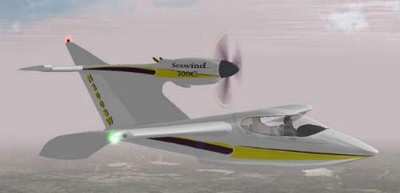Seawind Aircraft Impacted A Grocery Store Shortly After Takeoff
The NTSB has released a preliminary report in an accident in which a home-built airplane went down shortly after takeoff from Deland Municipal Airport northeast of Orlando (KDED), impacting a grocery store. One person in the store suffered serious injuries. All for aboard the airplane were also injured.

A witness said he observed a departure stall before the airplane went down. The investigation is looking at everything, of course, but the NTSB found it significant that the airplane had just been purchased by the pilot, and that it had not been flown in the previous three years.
NTSB Identification: ERA12FA265
14 CFR Part 91: General Aviation
Accident occurred Monday, April 02, 2012 in Deland, FL
Aircraft: SAPP LARRY E SEAWIND 3000, registration: N514KT
Injuries: 3 Serious,2 Minor.
This is preliminary information, subject to change, and may contain errors. Any errors in this report will be corrected when the final report has been completed.
On April 2, 2012, about 1920 eastern daylight time, an experimental amateur-built Seawind 3000, N514KT, owned and operated by a private individual, was substantially damaged when it impacted a building shortly after takeoff from the Deland Municipal Airport (DED), Deland, Florida. The certificated private pilot owner and a commercial pilot in the airplane were seriously injured. One person inside the building was seriously injured, and two other individuals inside the building sustained minor injuries. Visual meteorological conditions prevailed and no flight plan had been filed for the flight that was destined for the Daytona Beach International Airport (DAB), Daytona Beach, Florida. The personal flight was conducted under the provisions of Title 14 Code of Federal Regulations Part 91.
According to records obtained from the FAA, the amphibious airplane was issued an experimental airworthiness certificate in July 2002, and was purchased by the private pilot during January 2012.
According to witnesses and information obtained from the FAA, the pilot/owner and pilot-rated passenger flew from Aurora, Illinois, to DED on April 1, 2012, with a refueling stop in Tennessee, to begin training for a seaplane rating in Altamonte Springs, Florida, on the morning of the accident. The owner originally intended to land in Sanford, Florida; however, he elected to land at DED after the airplane's transponder malfunctioned while en route. The purpose of the accident flight was to fly to DAB to have the transponder replaced at a maintenance facility.
During a telephone conversation with an employee at the maintenance facility, the pilot/owner reported that he was new to the airplane, which he had purchased about 6 weeks earlier, after it had not been flown for about 3 years.
The airplane departed from runway 23, a 4,301-foot-long, asphalt runway.

A pilot at DED reported that he landed on runway 23, and while taxiing, observed the accident airplane depart. The airplane rotated about 500 feet prior to the end of the runway, and began a shallow climb, while mostly maintaining a high pitch angle. Shortly thereafter, he observed the airplane "stall" and enter a descending left spin, before it disappeared behind a tree line. He did not hear any communications from the accident airplane over the airport common traffic advisory frequency after the takeoff.
A witness, who was in a car that was parked outside the front entrance of a supermarket, reported that she heard two "sputtering" engine sounds. She then looked up and observed the airplane in a climb attitude, very low in the sky. The airplane turned left and immediately descended straight down, nose first.
The airplane descended into the roof of a supermarket, located about 1 mile from the departure end of the runway. The airplane penetrated the roof, and impacted shelving before coming to rest upright, on a heading of about 260 degrees.
A postcrash fire destroyed the cockpit and consumed a majority of the airframe, which was constructed of composite materials. The airplane was equipped with a tail-mounted Lycoming IO-540 series, 300-horsepower engine, with a three-bladed Hartzell constant-speed propeller assembly. One propeller blade was melted about 24-inches from the hub. A second blade was fractured about 17-inches from the hub, with its outboard section located in the debris. A third blade was intact. Two of the propeller blades had curled tips; however, all of the propeller blades were relatively straight, with no twisting damage. The engine, including all accessories sustained fire damage. Initial external examination of the engine did not reveal any catastrophic failures; however, the engine was retained for further examination. (File photo Seawind 3000)
 ANN's Daily Aero-Linx (04.16.24)
ANN's Daily Aero-Linx (04.16.24) Aero-News: Quote of the Day (04.16.24)
Aero-News: Quote of the Day (04.16.24) Airborne 04.10.24: SnF24!, A50 Heritage Reveal, HeliCycle!, Montaer MC-01
Airborne 04.10.24: SnF24!, A50 Heritage Reveal, HeliCycle!, Montaer MC-01 Airborne 04.12.24: SnF24!, G100UL Is Here, Holy Micro, Plane Tags
Airborne 04.12.24: SnF24!, G100UL Is Here, Holy Micro, Plane Tags Airborne-Flight Training 04.17.24: Feds Need Controllers, Spirit Delay, Redbird
Airborne-Flight Training 04.17.24: Feds Need Controllers, Spirit Delay, Redbird




